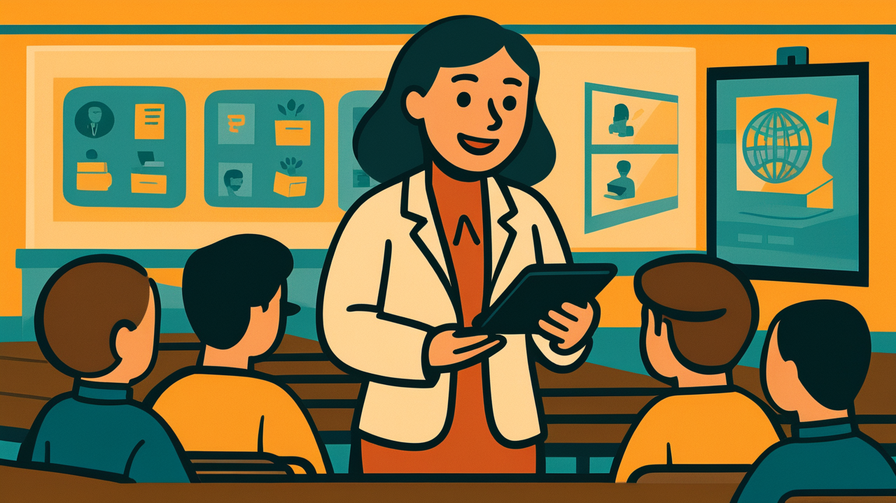[Disclaimer] This article is reconstructed based on information from external sources. Please verify the original source before referring to this content.
News Summary
The following content was published online. A translated summary is presented below. See the source for details.
Google has announced a major expansion of its educational technology offerings, providing free access to AI-powered tools through Google Classroom and extending availability of Google Vids to educational institutions. This update represents a significant investment in educational technology, making advanced AI capabilities available to teachers and students at no cost. Google Vids, a new AI-powered video creation tool, allows educators to quickly produce professional-quality educational videos using simple text prompts. The AI tools being integrated into Google Classroom include features for automated grading assistance, personalized learning recommendations, and content generation to help teachers save time on administrative tasks. These tools can help create quizzes, suggest lesson improvements, and provide real-time feedback to students. The rollout is part of Google’s broader initiative to democratize access to AI technology in education, ensuring that schools without large technology budgets can still benefit from cutting-edge tools.
Source: Google Blog
Our Commentary
Background and Context

Google Classroom launched in 2014 as a free web service to simplify creating, distributing, and grading assignments. It quickly became one of the world’s most popular educational platforms, especially during the COVID-19 pandemic when schools shifted to remote learning. Over 150 million users across 190 countries now use Google Classroom.
The integration of AI into education has accelerated dramatically since 2023, with tools like ChatGPT sparking debates about technology’s role in learning. Google’s move responds to both educator demands for time-saving tools and concerns about ensuring equitable access to AI technology across different economic backgrounds.
Expert Analysis
Education technology experts highlight that AI can address several persistent challenges in education. Teachers spend an average of 20-30 hours per week on administrative tasks like grading and lesson planning. AI assistance could reduce this burden, allowing more time for actual teaching and student interaction.
However, educators also express concerns about over-reliance on AI. The key is using these tools to enhance rather than replace human teaching. Google’s approach of providing “assistance” rather than automation suggests they understand this balance. The tools appear designed to support teachers’ work rather than substitute for their expertise.
Additional Data and Fact Reinforcement
Research shows that 67% of teachers report feeling overwhelmed by administrative tasks, with many working 50+ hour weeks. Schools using AI-assisted grading tools report saving an average of 7 hours per week per teacher. This time can be redirected to personalized student support, which studies show improves learning outcomes by up to 30%.
The global education technology market is expected to reach $400 billion by 2028. Google’s decision to offer these tools for free positions them strongly against competitors like Microsoft and Apple, who also target the education sector but often charge for premium features.
Related News
This announcement follows several major tech companies’ education initiatives. Microsoft recently added AI features to Teams for Education, while Khan Academy launched Khanmigo, an AI tutor. Amazon Web Services offers free cloud computing credits to schools exploring AI.
Governments worldwide are also investing in educational AI. The European Union allocated €2 billion for digital education initiatives, while China mandates AI literacy in all schools by 2030.
Summary

Google’s expansion of free AI tools in education represents a watershed moment for classroom technology. By removing cost barriers, Google enables schools everywhere to experiment with AI-enhanced teaching methods. Success will depend on proper teacher training and thoughtful implementation that enhances rather than replaces human instruction. This initiative could help prepare students for an AI-integrated future while supporting overwhelmed educators.
Public Reaction
Teachers’ unions have cautiously welcomed the announcement, emphasizing the need for professional development to use these tools effectively. Parents express mixed feelings, with some excited about personalized learning opportunities while others worry about screen time and data privacy. Students generally show enthusiasm, particularly for features that provide instant feedback and interactive learning experiences.
Frequently Asked Questions
Q: Will these AI tools replace teachers?
A: No, these tools are designed to assist teachers with time-consuming tasks, not replace them. Human teachers remain essential for emotional support, critical thinking development, and complex problem-solving.
Q: Are these tools really free?
A: Yes, Google has committed to providing these AI features at no cost to educational institutions using Google Workspace for Education.
Q: What about student data privacy?
A: Google states that student data in Google Classroom is not used for advertising and follows strict educational privacy laws like FERPA in the United States and GDPR in Europe.


